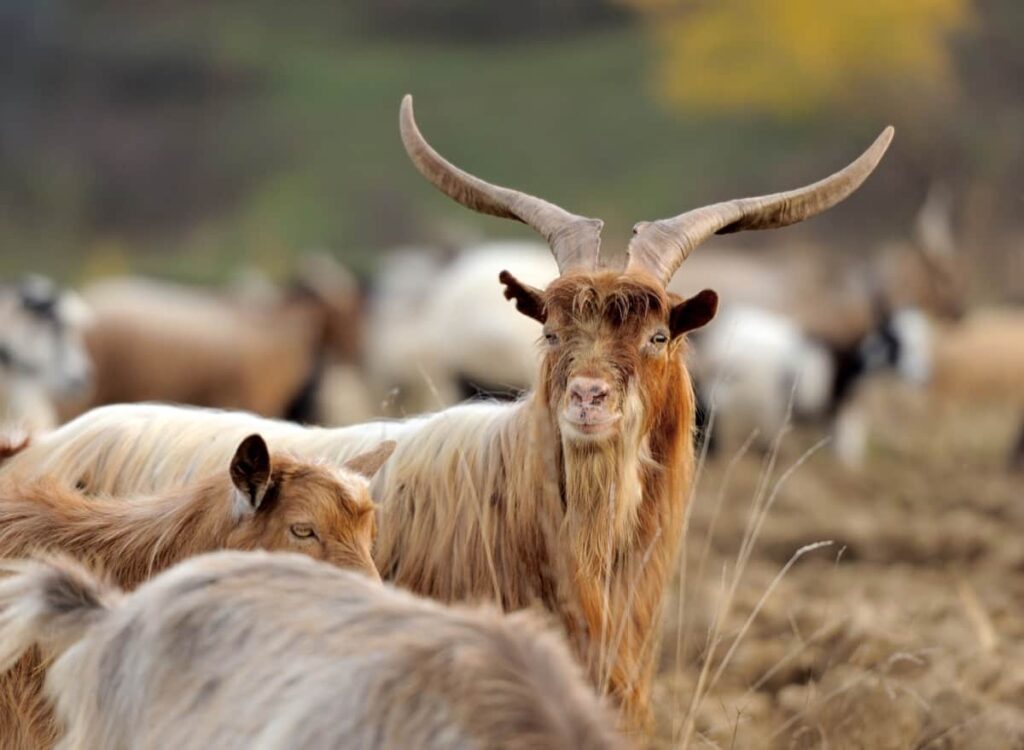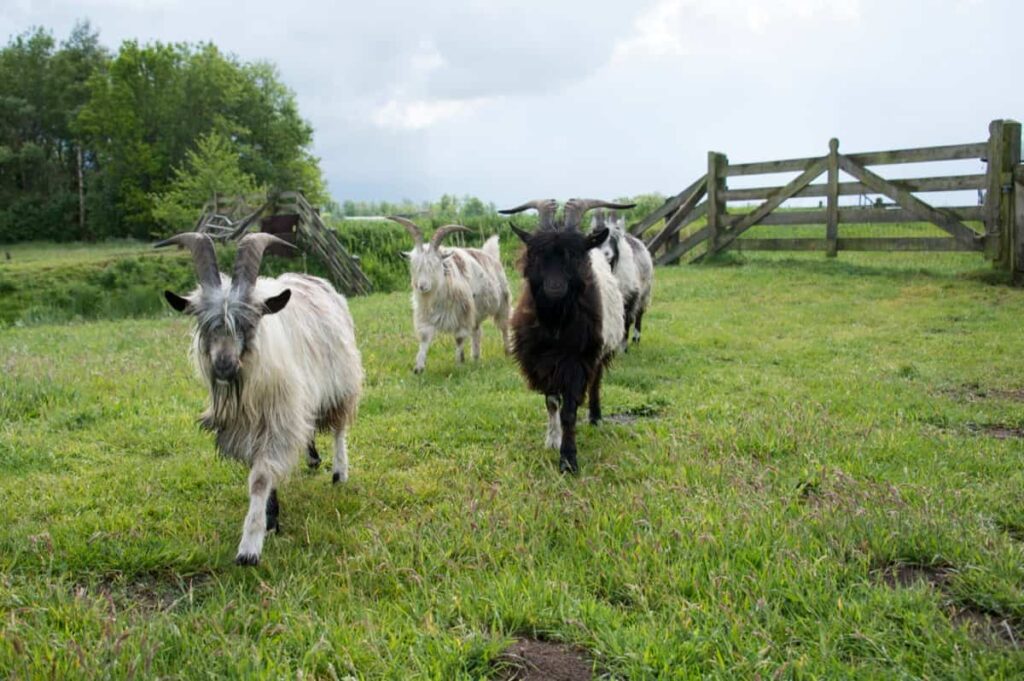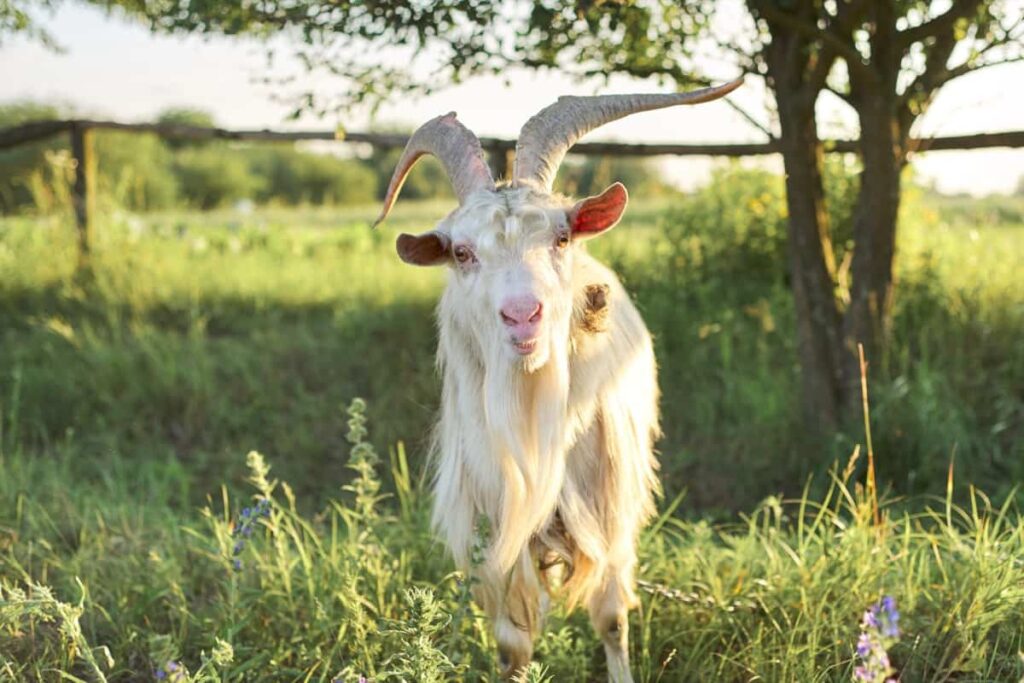Argentata Dell’Etna goat, a unique breed that has been thriving on the slopes of the Mount Etna volcano in Sicily for centuries. With its striking appearance and impressive qualities, this goat has become essential to the local economy and culture. In this blog post, we will look in-depth at the breed’s history and origin, physical characteristics, behavior and temperament, diet and nutrition, breeding and reproduction, uses and economic importance, and the challenges and threats facing this remarkable animal.

Argentata Dell’Etna Goat
What is Argentata Dell’Etna Goat Farming?
Argentata dell’Etna farming is the practice of raising and breeding the indigenous breed of domestic goat from the area surrounding Mount Etna in Sicily, Italy. This breed, known as the Argentata dell’Etna, is named after the volcano and is characterized by its silvery grey coat. The breed is primarily raised in the provinces of Catania and Messina but can also be found in Enna and Palermo.
History and Origin of the Argentata Dell’Etna Goat
- Argentata dell’Etna, breed is named after Mount Etna and its silvery grey coat.
- The origins of the Argentata dell’Etna Still are thought to share similarities with the Garganica breed and other Italian grey breeds, such as the Cilentana Grigia of Campania and Ciociara Grigia of Lazio.
- The breed is one of 43 Italian goat breeds with a herdbook maintained by the Associazione Nazionale della Pastorizia.
- The herdbook for the Argentata dell’Etna was established in 2002.
- As of the end of 2013, the registered population was reported to be between 1885 and 2304, with a total population of no more than 7000.
Physical Characteristics of the Argentata Dell’Etna Goat
- The breed is a medium-sized goat, with an average height of 75 cm for bucks and 67 cm for does.
- The breed’s grey coat, ranging from light to dark, has silvery reflexes.
- The hair of the breed is rough and medium-long.
- The breed has a grey-white coloured face and grey-coloured skin.
- Both bucks and does are usually bearded.
- Argentata Dell’Etna Goat is usually horned, and both bucks and does usually have horns.
- Tassels are usually present.
- The does weigh on average about 38 kg, and bucks weigh on average about 50 kg.
Facts about the Argentata Dell’Etna Goat
- The breed is an indigenous domestic goat from the Mount Etna region of Sicily, Italy.
- The volcano and its silvery grey coat inspired the breed’s name.
- The breed is primarily raised in Catania and Messina but also in Enna and Palermo.
- The Argentata dell’Etna is one of forty-three autochthonous Italian goat breeds with a limited distribution with their herdbook.
- The breed is used to produce both milk and meat.
Uses and Economic Importance of the Argentata Dell’Etna Goat
- The Argentata dell’Etna goat is a dual-purpose animal and is primarily kept as a dairy goat breed in its native area. It is raised for both meat and milk production.
- The average milk yield of the breed is impressive, with nannies producing up to 120 litres of milk in 150 days for first-time mothers, 160 litres in 210 days for second-time mothers, and 180 litres in 210 days for more experienced mothers.
- It may reach up to 300 litres in some cases. The milk is of high quality, with an average fat content of 4.5% and a protein content of 3.6%.
- The milk is typically used to make fresh and al forno ricotta and Padduni cheese, which has PAT status.
- The breed is also used for meat production. Kids are typically slaughtered at around one month of age. Consumers place a high value on the milk and meat products produced by the Argentata dell’Etna goat, which is considered of significant economic importance to Sicily’s local agriculture industry.
In case you missed it: Goat Breeding and Genetics for Improved Productivity and Disease Resistance

Feed and Nutrition of the Argentata Dell’Etna Goat
In addition to grazing on mountain plants, the Argentata Dell’Etna goat’s diet is often supplemented with alfalfa silage and protein to ensure high milk production. They require a diet high in fibre and protein for optimal health and productivity. The breed is known for being adaptable to different feeding systems, but good quality forage is important for its growth and development. They should have access to clean water to maintain good health.
Breeding and Reproduction of the Argentata Dell’Etna Goat
- Sexual maturity in males is reached at around 7-8 months, while females reach sexual maturity at around seven months.
- The breeding season typically occurs between August and February.
- The gestation period of the Argentata dell’Etna goat is around 150 days, and the average litter size is 1-2 kids.
- Twins are the most common, and triplets are rare.
- The newborn kids are weaned after 2-3 months and reproductively mature at around 7-8 months.
- Farmers often use artificial insemination to improve the breed’s genetics.
- To maintain the breed’s purity, breeding is closely monitored, and only purebred Argentata dell’Etna goats are used for reproduction.
- Breeding programs for this breed have been developed in Italy to conserve and improve its genetic traits.
Challenges and Threats to the Argentata Dell’Etna Goat
- Limited population: Only a few hundred purebred Argentata dell’Etna goats are left.
- Crossbreeding: Crossbreeding with other breeds for commercial purposes has caused the purebred population to decrease.
- Lack of financial support: Due to the low number of Argentata dell’Etna goats, there is a lack of financial support and research for their conservation.
- Changes in land use: The loss of grazing lands and the adoption of modern agriculture practices have affected the availability of food for the breed.
- Disease: Infectious diseases and parasitic infestations pose a significant risk to the Argentata dell’Etna goat, especially in uncontrolled or unsanitary farming conditions.
- Lack of awareness: Lack of awareness and promotion of the breed could also lead to its extinction.
In case you missed it: Innovative Housing and Shelter Designs for Profitable Goat Farming

Conclusion
The Argentata dell’Etna goat is a unique breed known for its grey coat with silvery reflexes, medium size, and dual purpose as a milk and meat goat. However, the breed faces genetic erosion and a declining population.
- Types of Grass Growing for Goat Farm
- How to Train Goats for Milking: A Beginners Guide
- Goat Milking Practices and Equipment: A Beginner’s Guide
- Goat Farming for Fiber: Producing Mohair and Cashmere
- Maximizing Goat Milk Production: Tips for Dairy Goat Farmers
- Goat Farming as a Family Business: Strategies for Success
- Profitable Kenya Goat Breeds for Commercial Dairy and Meat Business
- Unlock the Secrets of Oberhasli Goat: Discover Raising and Management Practices
- Ultimate Guide to Myotonic Goats: Explore Profile to Raising